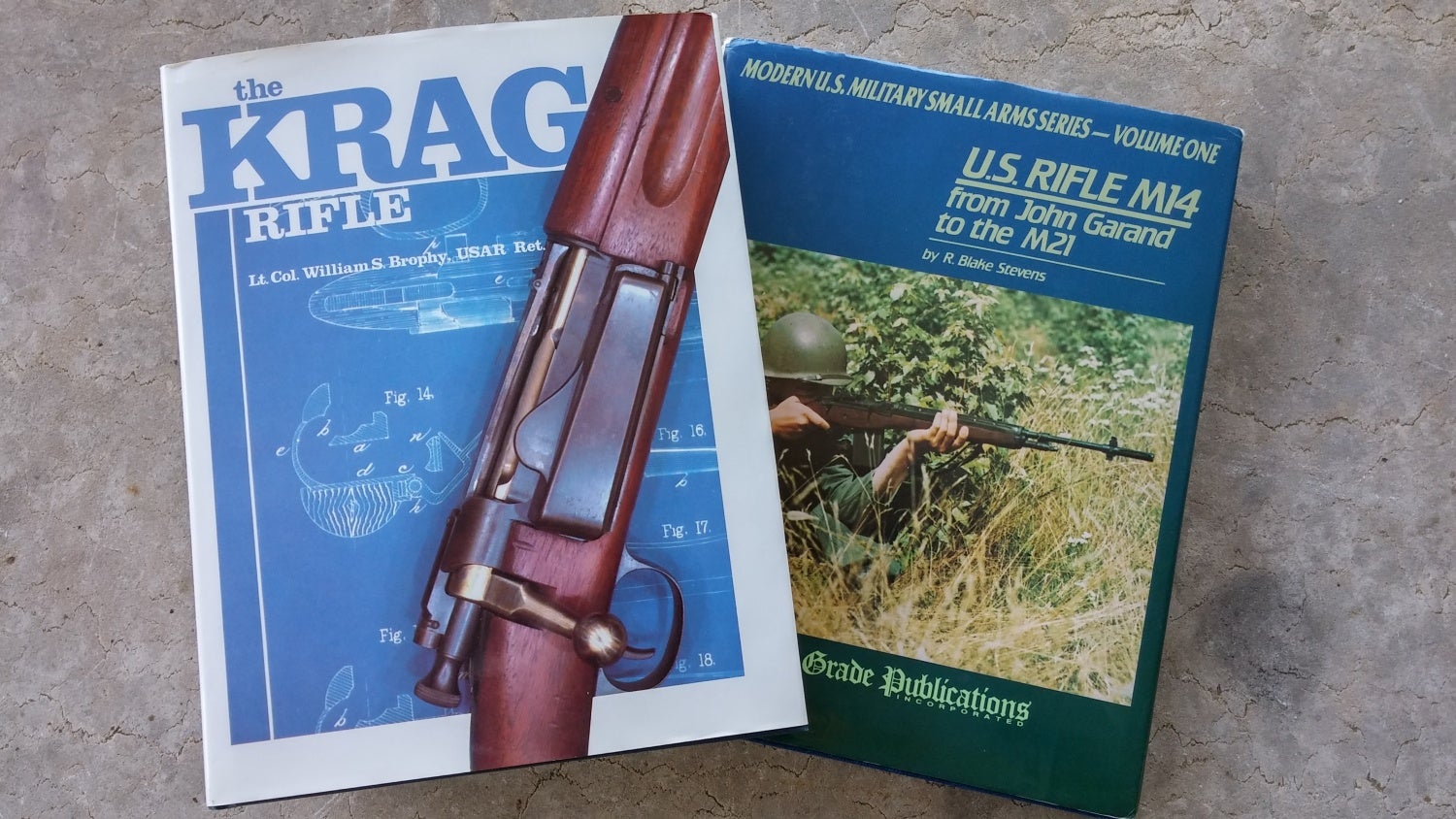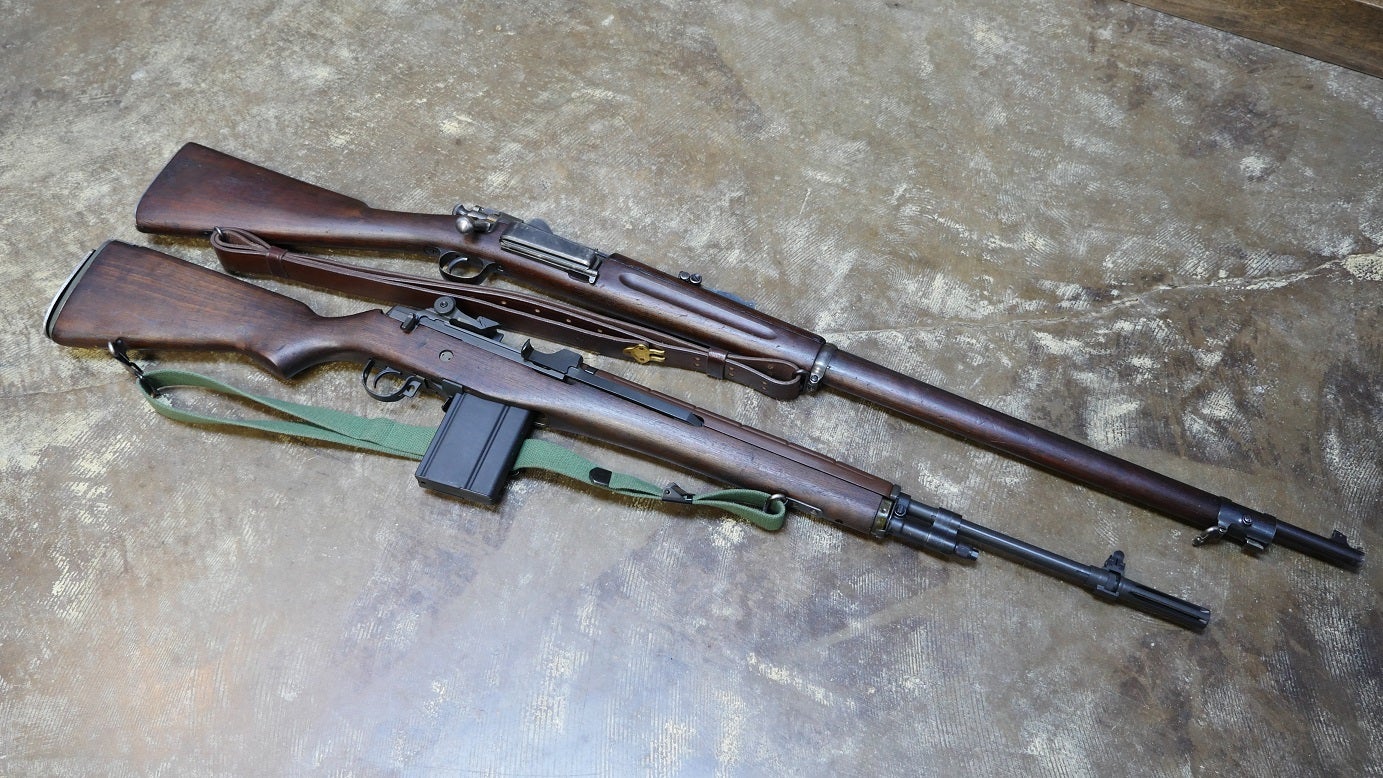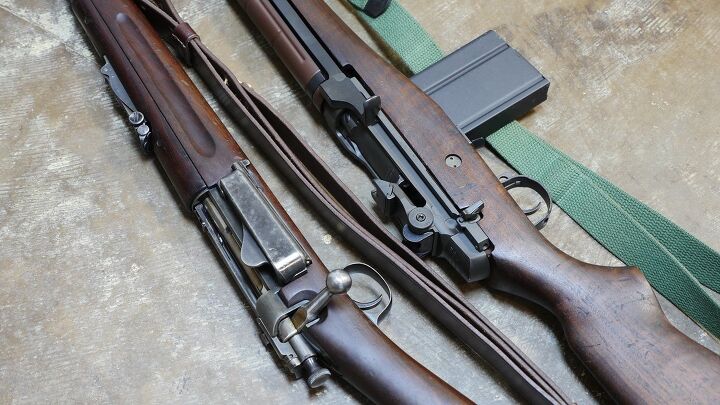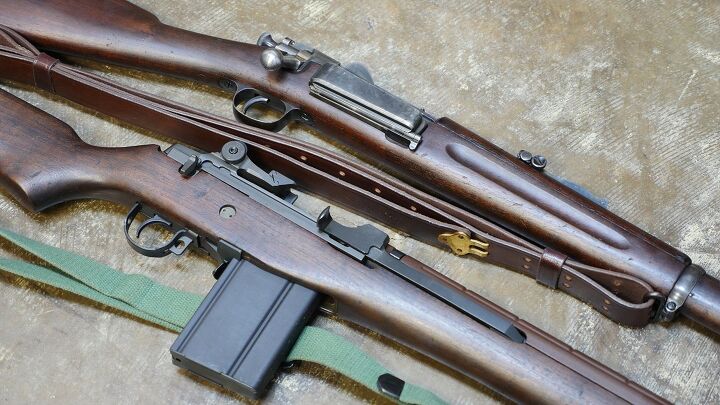What was the standard issue U.S. Army infantry rifle with the shortest service life? The most common answer is probably the Springfield Krag–Jørgensen rifle, which was quickly replaced after its lackluster performance in the Spanish-American War versus faster-firing, longer-ranged Spanish Mausers. Another good candidate is the M14, which was quickly replaced in Vietnam by the troubled M16 after the former rifle was wracked by scandal. These, then, are our two candidates, but the question remains: Which one had the longer service life? It would be easiest to simply look up the Wikipedia pages for both weapons, look for the date of introduction, find the date of introduction of their respective successors, and then subtract, but this would not give us an accurate answer. For one thing, rifles continue to serve long after their nominal replacement date, so the date of introduction of a new weapon does not actually tell us when the previous weapon stopped being used. For another, the dates of introduction are often misleading for many U.S. Army weapons, sometimes preceding their actual deployment by years. So, to accurately answer this question, we’ll need to hit the books.

Two of the books we’ll be using as reference: Brophy’s The Krag Rifle for part I, and Stevens’ U.S. Rifle M14: from John Garand to the M21, for part II.
First, we will tackle the Springfield Krag–Jørgensen, Model of 1892. Its name would suggest a date of introduction of 1892, but the designation actually refers to the date the rifle was recommended for adoption by the board of officers that had evaluated it. In fact, the first U.S. Krags had not even rolled off the line until early 1894, according to the 1894 Annual Report of the Chief of Ordnance, reproduced in Lt. Col. William S. Brophy’s The Krag Rifle on page 20:
The first of these arms was completed at the Springfield Armory about the 1st of January last. By June 1, the output had been increased to the rate of 40 rifles per day. At this date, 60 rifles per day are being produced and in a few months it is expected to advance to the rate of 80 rifles per day. Up to September 28, 2950 of the new magazine rifles had been manufactured. Early issues of single rifles were made to the military headquarters, the governors of States, and to the military service schools, besides a special issue of 40 rifles to Fort Sheridan, Ill., and issues will now be made to the regiments in the regular service.
Brophy also quotes the FY 1895 report:
The first regiment to be supplied with the United States rifle, caliber .30, model 1892, was the Fourth Infantry, to which the arms were shipped from this Armory October 6th, 1894. At this date the rifle has been supplied to all regiments of infantry and artillery and to the companies of engineer troops.
October 6th, 1894, therefore seems like a fine date to mark the official introduction of the Krag rifle into the Army itself. Aside from largely ceremonial issuance to state governors and Army officers, the rifle had been issued in small numbers to Fort Sheridan, and mass issuance to regular Army units was soon to follow.

An early serial number Model 1892 Krag rifle, above, and a Springfield Armory Inc M1A with an original M14 stock and selector switch, below. Image courtesy of Alex C.
At what point did the Krag leave regular service, though? This is actually two questions within one, as the Krag was first replaced by the Mauser-derived Model of 1903 in the regular Army, and then much later finally replaced in U.S. Navy service. According to Brophy, 62, the Krag continued being produced at Springfield Armory until November of 1904, giving it a production lifespan of about 10 and a half years. To pin down the end of the Krag’s service life with the U.S. Army, we need to first track the initial issuance of its replacement, the Model of 1903 Springfield. I consulted Clark Campbell’s book ’03 Springfield Era: When Smokeless Powder Revolutionized U.S. Riflery for the following information, beginning on page 12. West Point cadets were the first to be issued early 1903s in March of 1904, however, general issue of the new rifle wasn’t to officially begin until January of 1905. Because the Model of 1903 used different .30 caliber ammunition than the Krag, the Army planned to issue the 1903s en masse, once a significant stockpile of .30 Government (.30-03) ammunition had been produced. Unfortunately for the 1903, there was a major snag: President Theodore Roosevelt had been one of the first to receive the new Springfield rifle, and took it upon himself to test the new rifle’s combined cleaning rod/bayonet, of which he was highly skeptical. Apocryphally, the President had engaged in drill with another individual, he using the tried-and-true Krag and its Model 1892 bayonet, and his opponent armed with the new Model of 1903 rifle and its ramrod bayonet. In a letter dated January 4, 1905, Roosevelt lambastes the bayonet as being useless:
I must say that I think that ramrod bayonet about as poor an invention as I ever saw. As you observed, it broke short off as soon as hit with even moderate violence. It would have no moral effect and mighty little physical effect. I think the suggestion of a short triangular bayonet a great improvement. After you have gone over this subject of the bayonet and the sword, do take it up with me.
It’s worth noting that Campbell believes that no ramrod-bayonet 1903s were actually issued to the general Army. It was back to the drawing board for the Model of 1903; meanwhile the Krag soldiered on. The 1903’s troubles would not end there, however. In 1905, the German government adopted a new version of their 7.9mm rifle cartridge, called the S Patrone, which featured a pointed jacketed bullet with a high muzzle velocity and superior drag characteristics versus the older, heavier round-nosed type bullets. This was the first time the spitzer bullet had caught the public eye (the French had adopted a spitzer bullet seven years earlier in 1898, but it was kept secret), and nations around the world scrambled to catch up to the Germans. This caused yet another delay in the introduction of the Model of 1903, as the new American 150gr spitzer bullets exhibited poor accuracy with the existing throat designed for the original 220gr round-nosed bullets. As a result, production was again halted in November of 1906, with mass issuance of the rifles finally re-commencing in the latter half of 1907. Correspondingly, Frankford Arsenal continued to produce .30-40 M1898 Ball .30-40 ammunition until September of 1907 (Hackley, Woodin, Scranton, page 75), indicating that around this time the Krag–Jørgensen’s service life with the regular Army came to an end… For a little less than a decade. With U.S. entry into the Great War in 1917, all available Springfield rifles were sent to Europe, and U.S. troops at home and some secondary troops in Europe were armed instead with surplus Krag–Jørgensens. To fill the need for ammunition, the Army let a contract for .30-40 Krag ammunition to commercial ammunition manufacturers, who produced 25 million rounds in the caliber before the war’s end.
Although this article discusses U.S. Army rifles, both saw service with the Navy and Marines, as well, so it’s worth covering that here. In 1900, the U.S. Navy adopted the Krag–Jørgensen to replace their M1895 Lee rifles, which had suffered from a number of severe problems, chief among them the deterioration of a large percentage of the ammunition in the Navy’s stockpiles. Although the service would in turn adopt the Model of 1903 Springfield to replace the Krag in 1911, the Krag would soldier on in Navy service until 1919, at least, due to the aforementioned shortage of rifles with which to replace them. The Navy Bureau of Ordnance only declared the M1898 cartridge obsolete in 1931, though by that point it was only used in subcaliber training devices.
In the final analysis, there’s no easy answer for how long the Springfield Krag–Jørgensen served. The rifle was produced for about ten and a half years, and stayed in regular Army service for almost exactly 13 years, but was brought back out of retirement in early-mid 1917 to serve as a home guard rifle during the First World War, giving it another 1-1.5 years of service life for the Army. The Navy, on the other hand, used the gun from 1900-1919 at least. Therefore, from date of first issuance to date of final retirement, the Krag–Jørgensen served for almost a quarter century, with a cumulative total of 14.5 years of service in the general Army, and 19 years of service with the Navy.
How will the M14 compare? Find out, in Part II.
Many thanks to Daniel for his help making this article as accurate as possible!
 Your Privacy Choices
Your Privacy Choices

